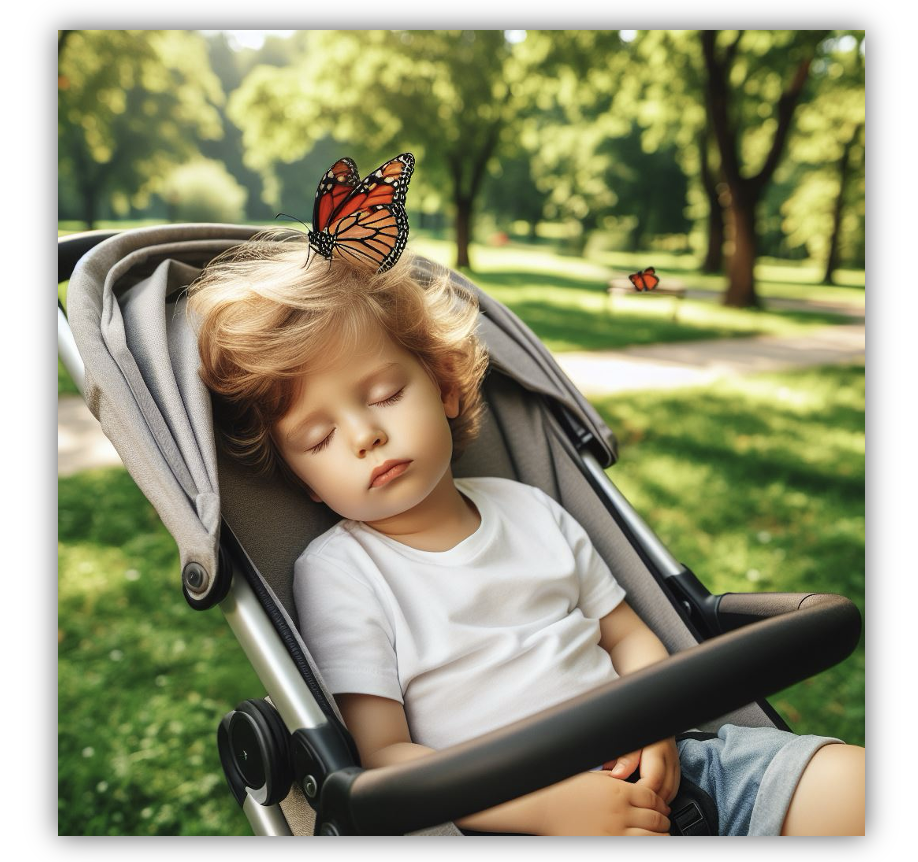Techniques de pointe pour l'épreuve orale du test d'anglais Duolingo : Maîtriser la tâche « Parler de la photo »
Bonjour, futurs champions du DET (Duolingo English Test)! Bienvenue à DET Practice. Aujourd'hui, nous allons explorer comment aborder la section ‘Speak about the Photo’ dans le DET. Tout d'abord, jetons un coup d'œil à la question ‘Speak about the Photo’:

Cette section, telle qu'elle figure dans le guide d'étude officiel du DET, implique un exercice oral unique. Contrairement aux tâches de prise de parole dans TOEFL ou IELTS, cette tâche vous demande de décrire verbalement une photographie en anglais. Elle impacte les scores des sections ‘Conversation’ et ‘Production’, avec un temps de réponse de 30-90 secondes.
* Pour une introduction plus détaillée à la tâche ‘Speak about the Photo’, nous vous recommandons notre article précédent: “Speak about the Photo“.
Pour comprendre le scoring du DET et des stratégies pour l'amélioration, référez-vous à “Duolingo English Test Scores: Insights and Comparisons” et “The Ultimate Guide to the Duolingo English Test” respectivement.
Obtenir un bon score dans les tâches orales nécessite de maintenir la fluidité dans le temps imparti. Cela est également crucial dans d'autres tests de langue comme le TOEFL ou l'IELTS. Un défi dans ‘Speak about the Photo’ est l'absence de prompts prédéfinis, ce qui peut rendre difficile maintenir une réponse d'une minute et 30 secondes, surtout lorsque les éléments de la photo sont limités. Alors, quelles stratégies pouvons-nous adopter?
Stratégie pour ‘Speak about the Photo’
Avant de plonger dans des techniques spécifiques, considérons une photo d'exemple. Notez que le DET utilise souvent des images mettant en scène des personnes, qui peuvent inclure des gros plans d'expressions ou d'actions.

Description Objective
Dans le DET, les tâches orales sont notées en fonction de leur pertinence par rapport au sujet. Nous vous recommandons de commencer par une description objective de la photo dans les 30 premières secondes afin de garantir que votre réponse est sur le sujet. Par exemple, si la photo montre un enfant blond dormant dans une poussette dans un environnement extérieur avec une verdure luxuriante, peut-être une forêt ou un parc, vous pourriez décrire la tenue de l'enfant (un t-shirt blanc et des shorts gris suggérant un après-midi d'été chaud) et un papillon reposant sur sa tête. Vous pouvez également évoquer l'atmosphère paisible et spéculer qu'un parent a capturé ce moment serein. Dans ‘Speak about the Photo’, considérez discuter des personnes, des vêtements, des actions, des professions, des identités, des états émotionnels, des expressions faciales et des environnements environnants.
Selon notre discussion précédente, votre réponse pourrait ressembler à ceci:
So, what we’re looking at here is really a picture-perfect scene taken outdoors. The greenery is vibrant—there’s grass, and trees all around, so I’m thinking this could be a beautiful park or maybe even a bit of forest area. Now, right in the heart of this natural setting, we’ve got this adorable blond child, just fast asleep in their stroller. They’re dressed in the simplest summer outfit, you know, a white T-shirt, grey shorts—totally what you’d wear on a sunny afternoon. And there’s this little surprise—a butterfly has landed right on their head! It’s one of those moments that’s just so peaceful, so serene, it’s got to be one of those memories that parents love to capture. It’s the kind of day that just feels like a gift, doesn’t it?
Oui, cette réponse semble bonne. Mais il y a un problème, elle est trop courte. Cette réponse peut ne pas suffire à maintenir 1 minute et 30 secondes de temps de parole.
Commentaire Personnel
Est-il acceptable d'ajouter des commentaires personnels? Oui, tout à fait. Après avoir décrit objectivement la photo, des commentaires personnels liés au contenu sont une stratégie viable. Mais faites attention au nombre de phrases (3-5 phrases) pour éviter de vous écarter du sujet. Les commentaires personnels aident à développer la réponse tout en restant pertinents.
Pour l'exemple ci-dessus, nous pourrions ajouter :
Well, looking at this image really warms my heart. It’s such a delightful scene. Being outdoors, taking in the fresh air, it’s incredibly beneficial for kids—both for their physical health and mental well-being. They get to be up close to nature, run around, jump, and even interact with wildlife, like this gentle butterfly here. It’s fantastic because it’s not just about staying active; it’s about feeding their curiosity as well. I truly believe that kids should engage in outdoor activities more often.
La réponse semble bonne, nous avons ajouté nos propres commentaires et essayé de garder la réponse sur le sujet. Donc, rappelez-vous, ajouter des commentaires personnels est un bon moyen de développer la question ‘Speak about the Photo’. Existe-t-il d'autres moyens de développer la réponse ? Veuillez continuer à lire le contenu suivant.
Contexte de la Photo
Considérez le contexte de la photo. Nous pouvons y réfléchir, dans quelles circonstances une photo a été prise. Comme dans notre exemple ci-dessus, nous pouvons imaginer. Cette photo a peut-être été prise par les parents de l'enfant, cela pourrait être un week-end (car ils n'ont pas besoin de travailler, ont le temps d'aller dehors ou de se promener dans le parc), une scène de sortie en famille. Ou à quoi cette photo vous fait-elle penser? Par exemple, votre propre expérience d'enfance. Peut-être pouvons-nous dire que cette photo me rappelle mon enfance, mes parents et moi allions souvent au parc près de chez nous, et le paysage du parc était aussi beau que la photo. Eh bien, il est temps pour nous d'aller plus loin dans la réponse, continuons avec la réponse précédente:
You know, this photo might very well have been taken by the child’s parents, capturing a slice of family time—perhaps over the weekend when there’s no work to rush to, allowing for a leisurely stroll in the outdoors or some relaxing time in the park. And it’s the kind of scene that nudges at my own memories, taking me back to my childhood. My parents would often take me to the park near our home, much like the one in this picture, where the scenery was just as picturesque.
Maintenant, la réponse semble plus substantielle.
Ajouter des Sentiments Personnels
Cela sera-t-il hors sujet? Pas si votre opération est correcte. C'est la partie où vous montrez vraiment vos compétences, car nous parlons des sentiments que l'image nous apporte. Par exemple, nous pouvons dire ceci :
So, it’s more than just a photograph; it’s a reminder of those carefree, joyful days. It’s about the bond we share with our loved ones and the simple pleasures of life, like watching your child sleep peacefully under the watchful eye of nature. You know, this image is a beautiful echo of times spent with family, treasured and timeless.
Eh bien, c'est ça. Je crois que nous avons```html une réponse orale assez complète et de haut niveau, mettons tout cela ensemble :
So, what we’re looking at here is really a picture-perfect scene taken outdoors. The greenery is vibrant—there’s grass, and trees all around, so I’m thinking this could be a beautiful park or maybe even a bit of forest area. Now, right in the heart of this natural setting, we’ve got this adorable blond child, just fast asleep in their stroller. They’re dressed in the simplest summer outfit, you know, a white T-shirt, grey shorts—totally what you’d wear on a sunny afternoon. And there’s this little surprise—a butterfly has landed right on their head! It’s one of those moments that’s just so peaceful, so serene, it’s got to be one of those memories that parents love to capture. It’s the kind of day that just feels like a gift, doesn’t it?
Well, looking at this image really warms my heart. It’s such a delightful scene. Being outdoors, taking in the fresh air, it’s incredibly beneficial for kids—both for their physical health and mental well-being. They get to be up close to nature, run around, jump, and even interact with wildlife, like this gentle butterfly here. It’s fantastic because it’s not just about staying active; it’s about feeding their curiosity as well. I truly believe that kids should engage in outdoor activities more often.
You know, this photo might very well have been taken by the child’s parents, capturing a slice of family time—perhaps over the weekend when there’s no work to rush to, allowing for a leisurely stroll in the outdoors or some relaxing time in the park. And it’s the kind of scene that nudges at my own memories, taking me back to my childhood. My parents would often take me to the park near our home, much like the one in this picture, where the scenery was just as picturesque.
So, it’s more than just a photograph; it’s a reminder of those carefree, joyful days. It’s about the bond we share with our loved ones and the simple pleasures of life, like watching your child sleep peacefully under the watchful eye of nature. You know, this image is a beautiful echo of times spent with family, treasured and timeless.
En combinant ces approches, vous pouvez créer une réponse orale complète et bien développée. Nous espérons que ces stratégies vous aideront à exceller dans la section ‘Speak about the Photo’ du DET. Bonne chance pour votre Duolingo English Test!
Commencez à vous entraîner dès aujourd'hui en vous inscrivant à notre banque de questions DET gratuitement.






